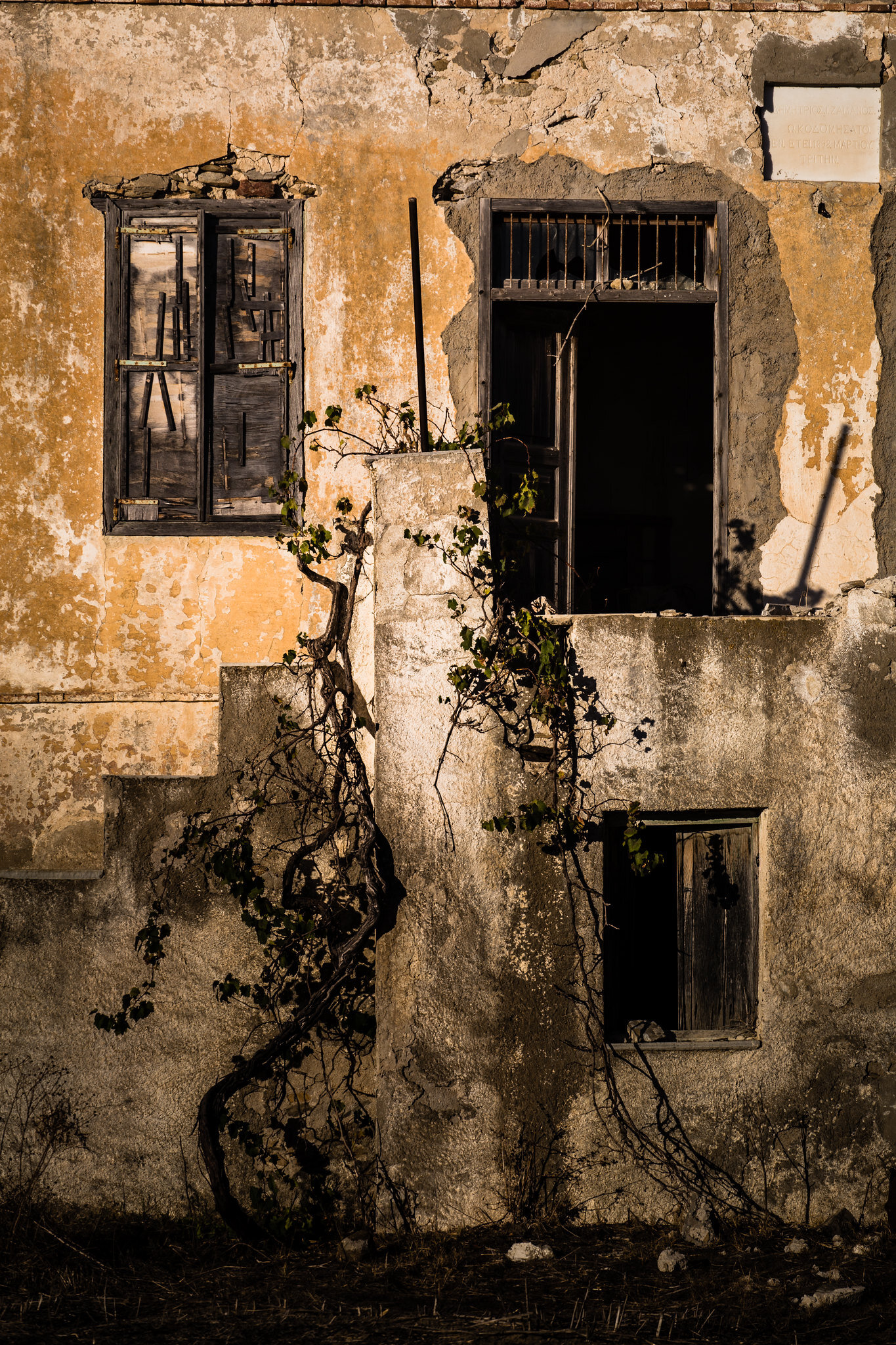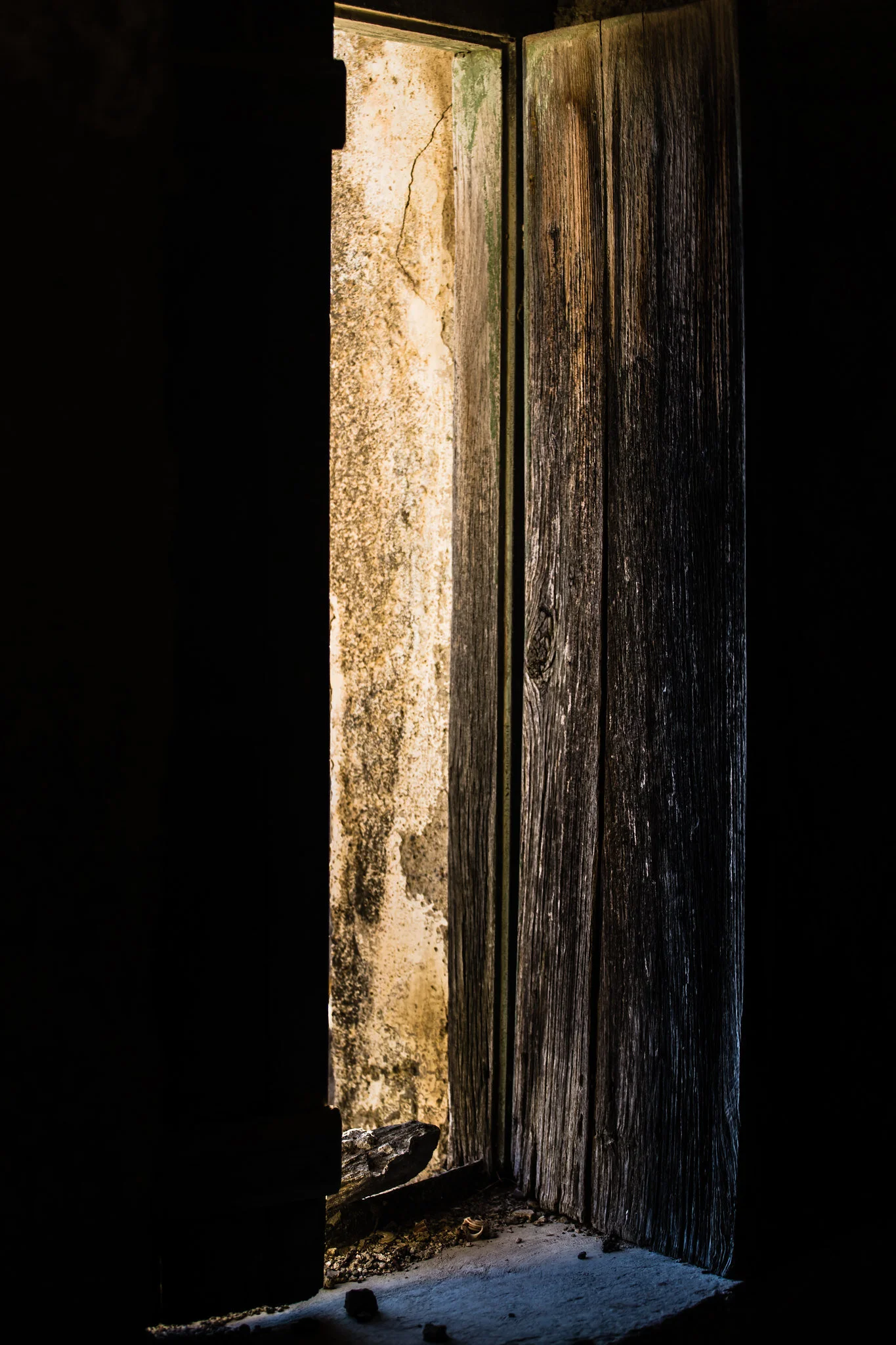Buildings of the Cyclades
Marble columns abandoned inside the skeletons of ancient churches hidden by trees and sprawling vegetation on the bumpy slopes of distant hillsides come to mind, as do remnants of lives lived inside stone structures located in places so remote they're often only stumbled upon, with ageing, fragmented mirrors fading slowly inside frames of dry, bare wood perched on large, rusting nails inserted determinedly into walls of such irregular shape it's amazing they still stand.
Old Stone House
Occasionally in my research of the Cyclades, a building I’ve discovered has been so particular its character has influenced my imagination.
Episkopi, Sikinos
Until 2018, it was believed to have been a former temple of Apollo made into a mausoleum for a Roman General. However, the tomb of a noble woman, Neiko (Νεικω), was discovered in July of that year hidden under the building indicating Episkopi's true purpose. By coincidence, I had photographed at the church with the model dressed in classical costume two years prior to this and had felt an aura of femininity about the building at the time. One of the photos from this set Lost Lady of Sikinos, Neiko became the centrepiece of the project and exhibitions in Milan and Chengdu, officially supported by the Ephorate of Antiquities and Hellenic Ministry of Culture’s video ‘Secrets of the Episkopi of Sikinos’ at this second exhibition, because of its unique historical relevance.
… the tomb of a noble woman, Neiko (Νεικω), was discovered in July of that year hidden under the building indicating Episkopi’s true purpose …
Mining Administration Building at
Mega Livadi, Serifos
The now crumbling neoclassical mining administration building at Mega Livadi in Serifos is a museum in itself and walking inside it a question of uncertainty. The atmosphere of this small village by the sea is welcoming and historically intriguing. The bay, like much of the island, was intensely focused on iron ore extraction, as can be seen by the solid stone supporting structures, iron tracks and bridge abandoned decades ago. Working conditions in the mines were very harsh, and, according to historians, thousands of workers lost their lives in the tunnels due to the inhuman conditions and lack of safety measures.
Working conditions in the mines were very harsh, and, according to historians, thousands of workers lost their lives in the tunnels due to the inhuman conditions and lack of safety measures.
House at Kambos, Ios
The house in Kambos, behind Yialos beach in Ios port bay was built in 1898 for a teacher on the island, the two- storey building is still intact, quite well so. Abandoned in the 1950s, the rooms remain filled with furniture carefully placed, including coverings on beds.
Abandoned in the 1950s, the rooms remain filled with furniture carefully placed …
Sulphur Mine at Thiorykia, Milos
The ruins of Paliorema sulphur mine are the remains of an important period of industry on the island. Mining of sulphur ceased when abundant supplies became available as by-products of refining sulfur-rich hydrocarbons. In its final years, the processing plant, owned by Milos Sulphur Mines SA, used the innovative Svoronos method for highly efficient recovery of the ore. This method was used from 1952 to 1958 until the company went bankrupt following a massive drop in sulfur prices.
This method was used from 1952 to 1958 until the company went bankrupt following a massive drop in sulfur prices.
Guest House of Once Upon a Time
The abandoned guest house at Aghia Theodoti, on the northern coastline of Ios, fascinates me because I’d last seen it in 1985 after an eight hour walk across the island from the south-east over goat paths mostly grown over with rough, thorny vegetation. Almost thirty years later, it was just a tale from the past.
Almost thirty years later, it was just a tale from the past.
Old Stone House
Marble columns abandoned inside the skeletons of ancient churches hidden by trees and sprawling vegetation on the bumpy slopes of distant hillsides come to mind, as do remnants of lives lived inside stone structures located in places so remote they're often only stumbled upon, with ageing, fragmented mirrors fading slowly inside frames of dry, bare wood perched on large, rusting nails inserted determinedly into walls of such irregular shape it's amazing they still stand. Small, at times intricately designed, bottles containing oils and ointments from decades ago remain placed on shelves of flat rock built, as was custom, into the original design.
… as do remnants of lives lived inside stone structures located in places so remote they're often only stumbled upon.
Old photographs occasionally found, by now tainted sepia, show local women with men, their expressions
proud and determined, posing on chairs or standing, their costumes and carefully groomed dark hair
expressing traditional values of once upon a time. Decaying woollen mattresses lie alone on planks of stone closely placed above rough floors covered with a natural blanket of dried twigs and foliage visible to the sky
from partially caved in roofing made of olive branches, bamboo and large flat stones. Rotting garments hang undisturbed in wait, with never ending patience, for the day they'll become nothing, perhaps still many years from now. I'm always mindful of snakes inside these homes of once-upon-a-time, which is why the details speak so vividly.





























